
|   |

|   |
The mystic longing to be One with the Eternal - Dr. S D Desai e-mail: sureshmrudula@yahoo.co.in October 12, 2013 Metaphors are all from Lal Ded’s vachs. Their cherished unfolding is by Meeta Vasisht – through lyrical body language that resembles dance in slow motion, the vachika that is deliberately made simple with flowing pithy pauses and moments of silence, the deceptively plain attire, dishevelled look and significantly changing colours of the scarves she wears. Above all, through complex semiotic signs that spring spontaneously as it were from her conviction. 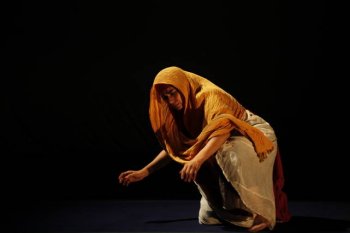 The search of the Shaivite mystic poetess and saint Lalleshwari of Kashmir for the eternal, the longing of the atma for the parama atma, is as old and widespread as the valley and the flashes of revelation are both primeval and of the time you belong to. With her being nearly dissolved in the spirit of the mystic, the performer conjures up aural and visual images embedded in Lalla’s lines, such as others like her in the quest like Kabir and Meera have used – plain, undecorated, wafting from the source to the heart of the listener-viewer across time. 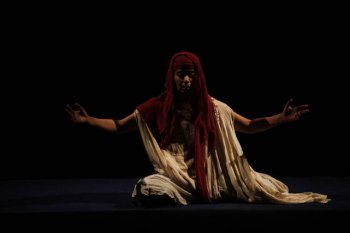
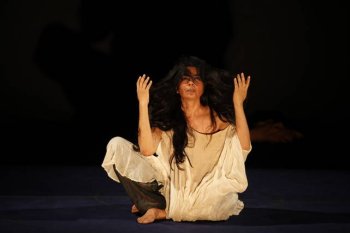
Photos: Piyush Patel
Like a cotton flower (kapaas), Lalla sings, she longed to bloom.
Instead, she was picked and thrashed and spun and cut out of shape. Like
Meera, she renounced the world after marriage. Unlike Meera, however,
her search for Him was within. She struggled and prepared herself
through austerity, roaming, observation, meditation, compassion and
equanimity. When she attained a vision, her words became vachs
coming from within and appealing to one and all irrespective of their
faith. Ironically, geographically she belonged to the land that is torn
asunder by strife today.Meeta Vasisht Meeta, one with the character she essays, movingly conveys her inner struggle and gradual enlightenment in her solo performance Lal Ded. She gets withdrawn, remains minimalist in outward details, portrays the inner ascension culminating in sahasraara, the final stage of awakening and beginning of realization that ‘one is all, all is one’. It is with economy and suggestion that the initial conflict with the outer world gets highlighted, the sloughing of the attire signified, the evolution within is conveyed. Action remains subdued, so does voice modulation. She evokes the ambience of the surrounding, the dignity and the mystique of the spiritual search and the poetry of it all with artistic choices. Meeta Vasisht’s performance was held as part of a three-day multi-arts, multi-venue Ahmedabad International Arts Festival (AIAF) celebrating, in its director Anupa Mehta’s words the city, its culture and its creativity, at Darpana Academy’s Natarani. Images of Mallika Sarabhai’s multi-arts collaboration And Lalla Sang last December at the same venue as part of Vikram Sarabhai International Arts Festival keep flashing on the mind. It was another creative interpretation of Lal Ded and her vachs. 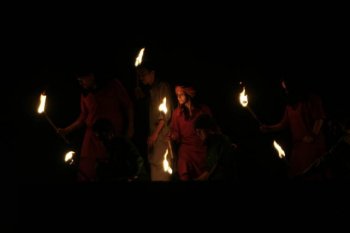
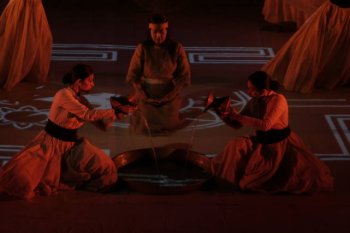 Photos: Anahita Sarabhai  Photo: Yadavan Chandran And Lalla Sang Dr. SD Desai, a professor of English, has been a Performing Arts Critic for many years. Among the dance journals he has contributed to are Narthaki, Sruti, Nartanam and Attendance. He guest-edited Attendance 2013 Special Issue. His books have been published by Gujarat Sahitya Academy, Oxford University Press and Rupa. After 30 years with a national English daily, he is now a freelance art writer. |